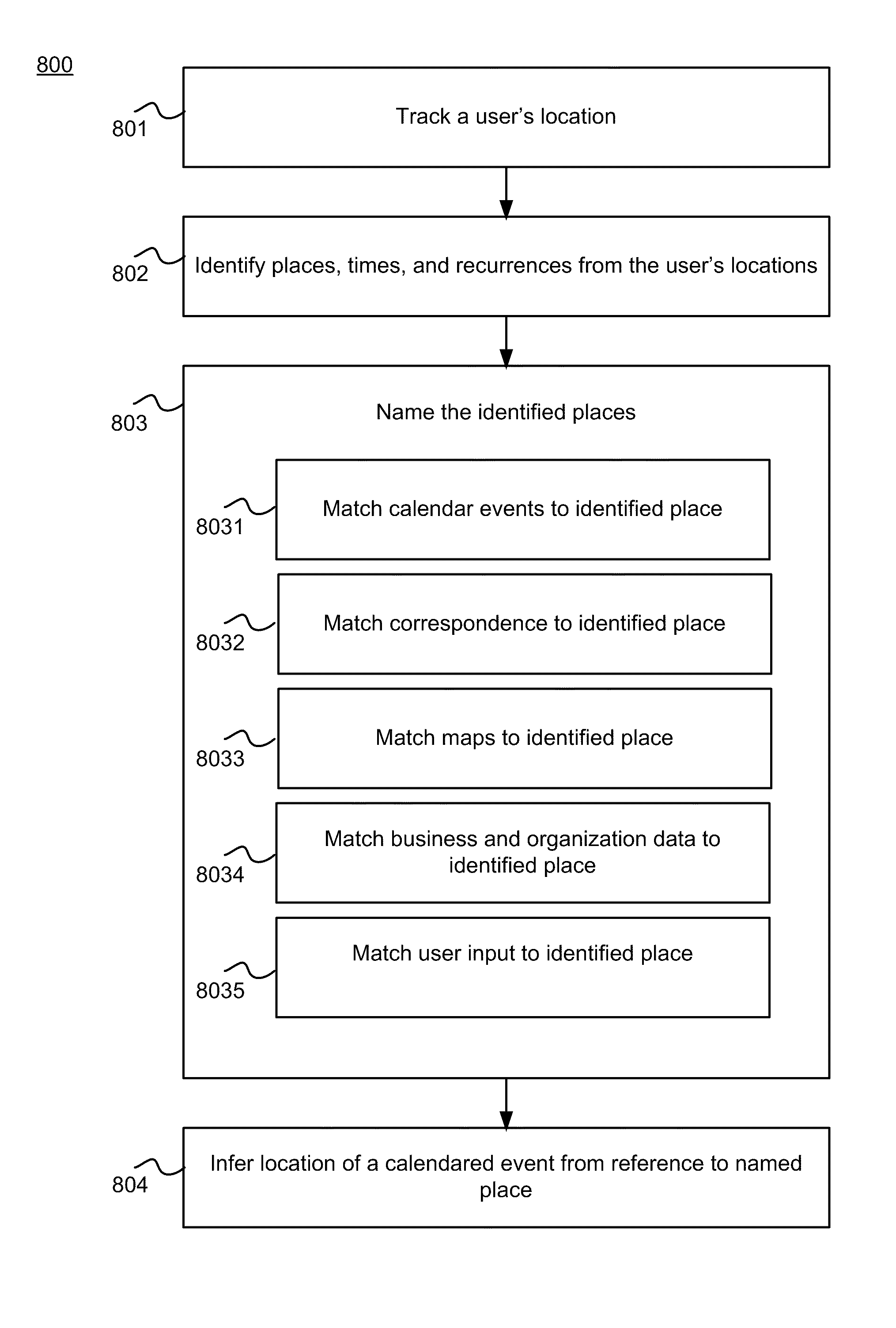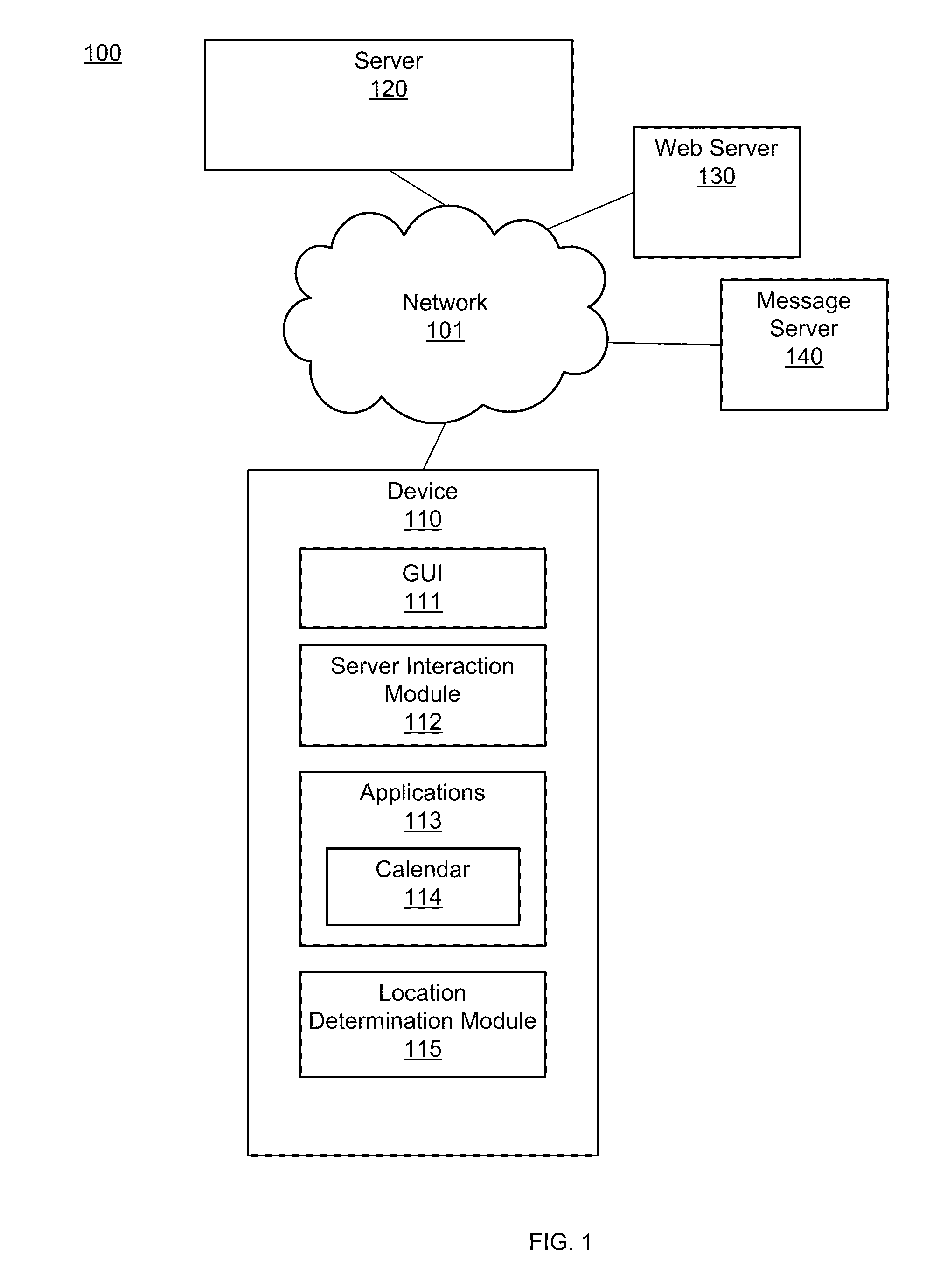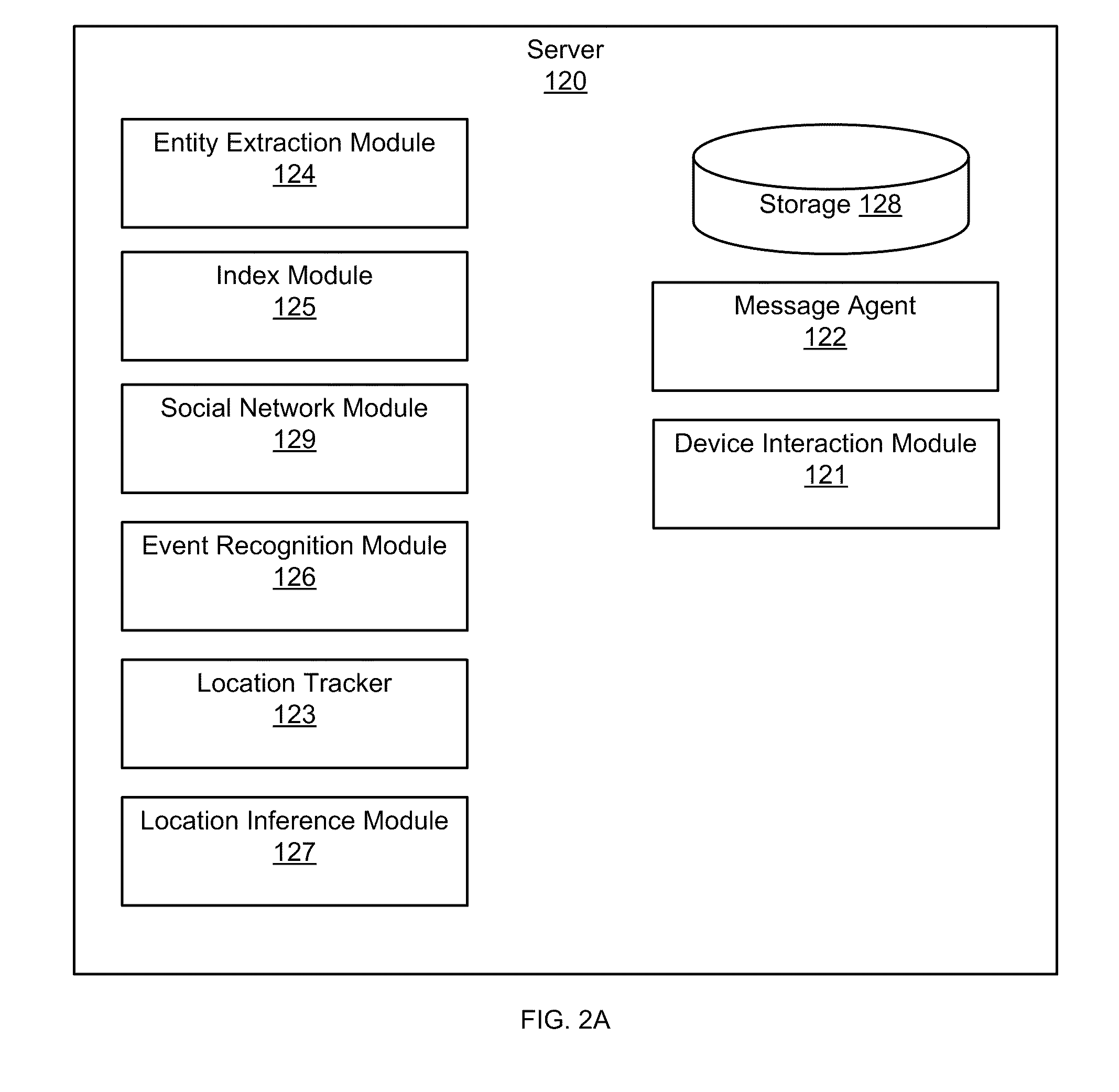Calendaring Location-Based Events and Associated Travel
a location-based event and calendar technology, applied in the field of electronic calendars, can solve the problems of not allowing enough travel time, not adequately accounting for implicit conflicts created, and leaving too late,
- Summary
- Abstract
- Description
- Claims
- Application Information
AI Technical Summary
Benefits of technology
Problems solved by technology
Method used
Image
Examples
Embodiment Construction
[0022]Embodiments of the invention provide methods, systems, and computer program products for an electronic calendar that recognizes events on the calendar occur at locations and accounts for time needed to travel between the locations for the calendared events. The electronic calendar may be accessed through an application on a mobile device such as a “smart phone” or a laptop that is equipped with GPS or other location determination technology. Thus, as the user carries the device from place to place throughout the day, the user can access the user's calendar and the device can track the user's location. Through recognizing patterns in the user's locations and from analyzing the user's calendared events and the user's correspondence, the user's future location can be inferred, thus enabling estimates of travel times to events on the calendar from the user's likely starting location and estimates of travel times from events on the calendar to the user's likely next destination.
[00...
PUM
 Login to View More
Login to View More Abstract
Description
Claims
Application Information
 Login to View More
Login to View More - R&D
- Intellectual Property
- Life Sciences
- Materials
- Tech Scout
- Unparalleled Data Quality
- Higher Quality Content
- 60% Fewer Hallucinations
Browse by: Latest US Patents, China's latest patents, Technical Efficacy Thesaurus, Application Domain, Technology Topic, Popular Technical Reports.
© 2025 PatSnap. All rights reserved.Legal|Privacy policy|Modern Slavery Act Transparency Statement|Sitemap|About US| Contact US: help@patsnap.com



